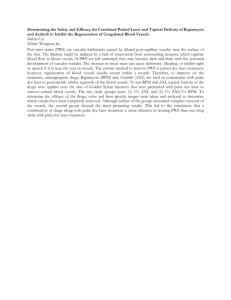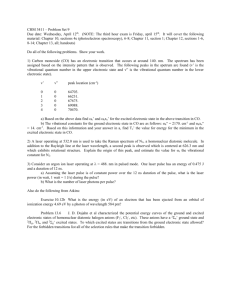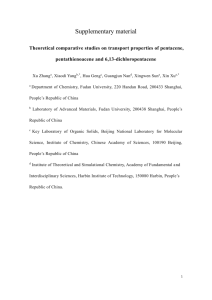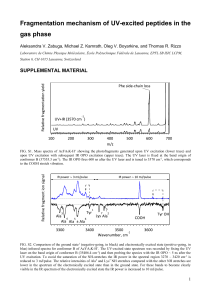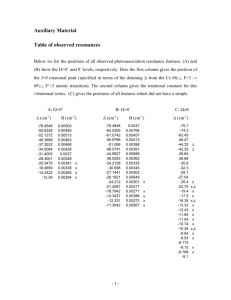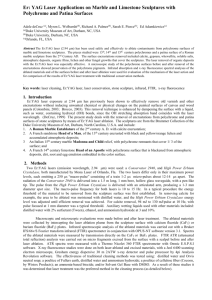Molecular physics in Bergen and Iceland:
advertisement
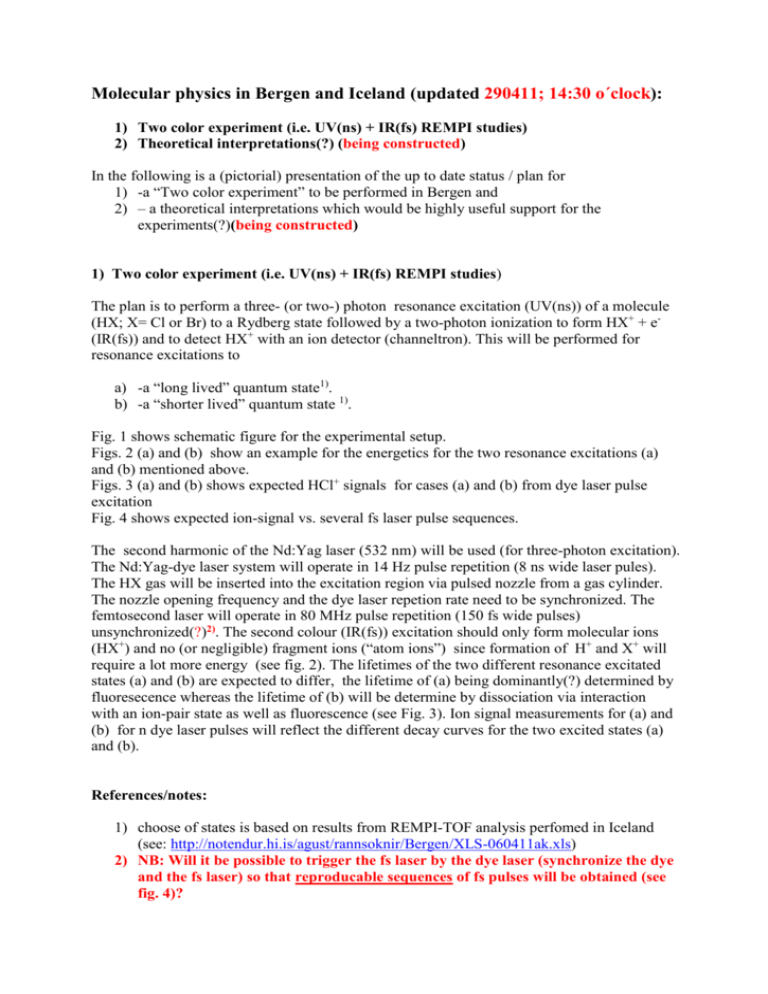
Molecular physics in Bergen and Iceland (updated 290411; 14:30 o´clock): 1) Two color experiment (i.e. UV(ns) + IR(fs) REMPI studies) 2) Theoretical interpretations(?) (being constructed) In the following is a (pictorial) presentation of the up to date status / plan for 1) -a “Two color experiment” to be performed in Bergen and 2) – a theoretical interpretations which would be highly useful support for the experiments(?)(being constructed) 1) Two color experiment (i.e. UV(ns) + IR(fs) REMPI studies) The plan is to perform a three- (or two-) photon resonance excitation (UV(ns)) of a molecule (HX; X= Cl or Br) to a Rydberg state followed by a two-photon ionization to form HX+ + e(IR(fs)) and to detect HX+ with an ion detector (channeltron). This will be performed for resonance excitations to a) -a “long lived” quantum state1). b) -a “shorter lived” quantum state 1). Fig. 1 shows schematic figure for the experimental setup. Figs. 2 (a) and (b) show an example for the energetics for the two resonance excitations (a) and (b) mentioned above. Figs. 3 (a) and (b) shows expected HCl+ signals for cases (a) and (b) from dye laser pulse excitation Fig. 4 shows expected ion-signal vs. several fs laser pulse sequences. The second harmonic of the Nd:Yag laser (532 nm) will be used (for three-photon excitation). The Nd:Yag-dye laser system will operate in 14 Hz pulse repetition (8 ns wide laser pules). The HX gas will be inserted into the excitation region via pulsed nozzle from a gas cylinder. The nozzle opening frequency and the dye laser repetion rate need to be synchronized. The femtosecond laser will operate in 80 MHz pulse repetition (150 fs wide pulses) unsynchronized(?)2). The second colour (IR(fs)) excitation should only form molecular ions (HX+) and no (or negligible) fragment ions (“atom ions”) since formation of H+ and X+ will require a lot more energy (see fig. 2). The lifetimes of the two different resonance excitated states (a) and (b) are expected to differ, the lifetime of (a) being dominantly(?) determined by fluoresecence whereas the lifetime of (b) will be determine by dissociation via interaction with an ion-pair state as well as fluorescence (see Fig. 3). Ion signal measurements for (a) and (b) for n dye laser pulses will reflect the different decay curves for the two excited states (a) and (b). References/notes: 1) choose of states is based on results from REMPI-TOF analysis perfomed in Iceland (see: http://notendur.hi.is/agust/rannsoknir/Bergen/XLS-060411ak.xls) 2) NB: Will it be possible to trigger the fs laser by the dye laser (synchronize the dye and the fs laser) so that reproducable sequences of fs pulses will be obtained (see fig. 4)? To diffusion pump channeltron UV(ns) Pulsed nozzle; General valve Molecular “beam” IR(fs) valve HX gas bottle To pump Fig. 1: Schematic figure for the experimental setup (agust,heima,....2011/equipments-280411ak.ppt) 145438.14 cm-1 ...H+ + Cl + e- ...... ...H+ Cl+ + e- ...... 140 140750.4 cm-1 (b) (a) 120 .....HCl+ + e- ...... Energy/ cm-1 100 102819 cm-1 IR (fs) IR (fs) Rydb. J´=5 80 82079.82 cm-1 x10 3 82338.14 cm-1 Rydb. J´=2 Dissociation via an Ion-pair state 60 fluoresc. ~ 10 ns(?) 40 fluoresc. ~ 10 ns(?) UV (ns) UV (ns) 20 J´´=5 0 312.74 cm-1 J´´=2 62.62 cm-1 Fig. 2. Example for resonance excitations (a) and (b): The example corresponds to threephoton resonance excitation to the 32, v´=0 state of HCl. (<= agust,heima,...2011/PPT-28041aak.ppt) HCl+ signal UV (ns) (a) UV (ns) exp(--1*t) exp(-(-1+d-1)*t) J´´=5 J´´=2 312.74 cm-1 62.62 cm-1 (b) Fig. 3 Expected HCl+ signals for cases (a) and (b) from dye laser pulse excitation. exp(--1*t) J´´=5 312.74 cm-1 J´´=2 62.62 cm-1 IR(fs) pulses Fig. 4 Expected ion-signal from dye laser pules excitation vs. several fs laser pulse sequences (80 MHz repetition rate / with 12. 5 ns time intervals between pulses)



